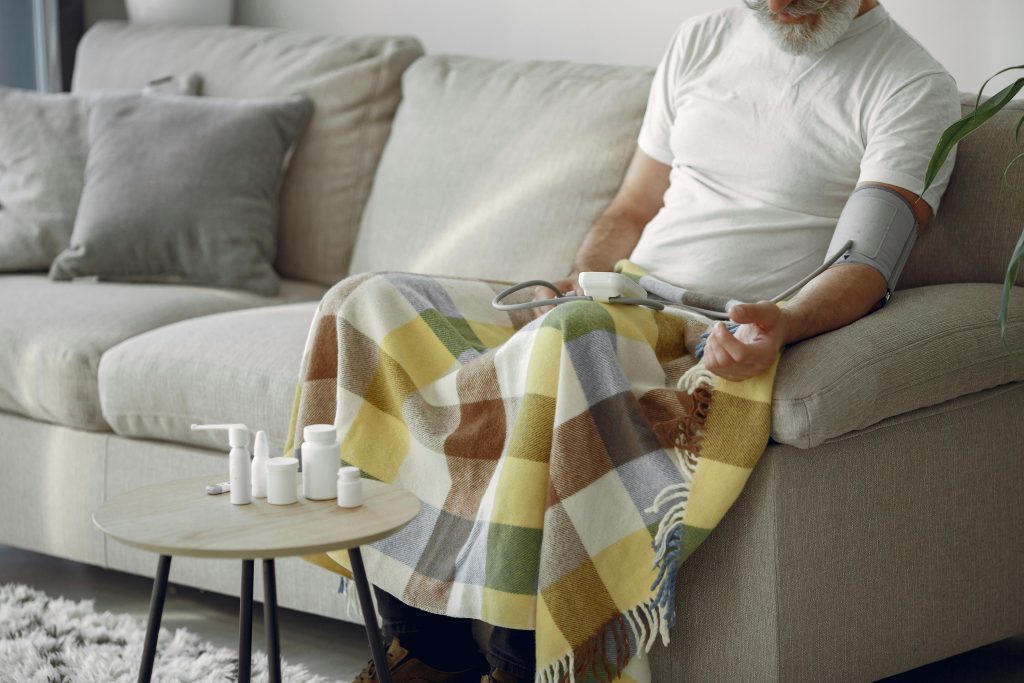Millions of people around the world live with high blood pressure while dancing, walking, laughing, making plans, falling in love, exercising, and enjoying morning coffee. Hypertension doesn’t demand isolation – it asks for attention. It doesn’t forbid movement or require fear, but calls for gentle discipline. It’s not an enemy, but an internal barometer that responds to life’s rhythm, salt in food, unspoken emotions, forgotten walks, and other everyday details.

What is hypertension and why does it occur – global disease statistics
Hypertension is a condition in which blood pressure consistently exceeds normal levels. Typically, readings above 140/90 mmHg are considered high, but even values starting at 130/80 can be a warning sign, especially if they persist at rest. These numbers reflect how blood vessels, the heart, and the nervous system interact with lifestyle.
Blood vessels lose elasticity, their walls become less flexible, and the lumen narrows. It’s like a pipe shrinking while the pump continues to work at full force. Pressure rises to push blood through the resistance. But it’s not just age that matters – nutrition, stress, movement, and sleep either support vascular harmony or disrupt it.
Hypertension comes in two types:
- Primary (essential) – the most common, develops gradually without a clear cause, but against a backdrop of many factors: genetics, weight, salt intake, anxiety, sedentary lifestyle.
- Secondary – the result of other conditions, such as kidney, adrenal, or thyroid disorders, or a side effect of certain synthetic medications. In both cases, it’s important to understand what influences blood pressure
According to WHO, more than 1.4 billion people worldwide live with hypertension – nearly one in three adults. Yet around 44% are unaware of their diagnosis – blood pressure can go unnoticed for years until a stroke or heart attack occurs. Hidden hypertension is especially insidious. It doesn’t hurt, doesn’t interfere with work, doesn’t demand urgent action. But it gradually reshapes the vascular landscape.
Heredity and risk factors
Age, weight, diet, stress, and inactivity negatively affect vascular tone. These are the main global risk factors for developing hypertension.
With age, vessels become less elastic. Excess weight increases blood volume and heart load. Too much salt and too little potassium disrupt fluid balance. Chronic stress keeps the body in alert mode, narrowing vessels and speeding up the pulse. A sedentary lifestyle makes the heart sluggish and vessels fragile.
But there are things we don’t choose – heredity. If parents or close relatives had hypertension, the risk is higher. This doesn’t mean the diagnosis is inevitable. It simply means the body is more sensitive to triggers. Genes influence how the body regulates pressure: how quickly vessels constrict, how kidneys excrete sodium, how the heart responds to stress. Genes create predisposition, not destiny.

Often it’s not just genes, but family habits. For example: no culture of movement or physical activity, traditionally salty and fatty food, stress kept silent, rest seen as weakness. These habits also negatively affect health.
Hypertension and active living: how to care for yourself without fear or overload
A body with high blood pressure doesn’t require total avoidance of activity. Many fear that exercise will spike pressure, trigger a crisis, or overload the heart.
But in reality, movement is one of the most reliable ways to stabilize blood pressure. When the body lives without movement for too long, it tightens internally. The heart runs idle, vessels lose elasticity, metabolism slows, stress levels rise.
Physical activity affects blood pressure in several ways:
- Improves circulation – blood flows more freely, vessels dilate.
- Lowers stress hormones – especially cortisol and adrenaline.
- Strengthens the heart muscle – the heart works more efficiently, without overload.
- Reduces inflammation – especially with regular, moderate activity.
- Stabilizes rhythms – sleep, appetite, and mood come into balance.
Gentle, rhythmic forms of movement are suitable for people with hypertension: walking, swimming, yoga, dancing, Nordic walking, stretching, cycling on flat terrain. The key is regularity, not intensity.
How to exercise safely: body dialogue, not endurance training
Before exercising, it’s important to measure blood pressure. This helps assess the state of the vessels. If readings are above 160/100, it’s better to postpone the workout – opt for breathing, walking, or stretching instead. Measure again after the session. If pressure drops or remains stable, the body responded calmly. If it rises, the load was excessive or too abrupt.
Warm-up isn’t just muscle prep – it’s system tuning. It helps the heart shift into working mode and vessels adapt to rhythm changes. Five to ten minutes of gentle walking, circular movements, and breathing are enough. After the workout, a cool-down is needed: stretching, slow steps, calm breathing. This returns the body to rest without abrupt stops.

During exercise, it’s important to drink water. Dehydration raises blood pressure, especially in heat. But too much fluid can overload the heart. It’s best to sip small amounts, guided by thirst.
The main guide is body signals. If dizziness, shortness of breath, chest heaviness, or ringing in the ears appear, stop.
Regularity matters more than intensity. Blood pressure stabilizes when movement becomes part of the rhythm. It’s better to walk for 30 minutes daily than exercise for an hour once a week. The body responds to repetition.
Drinks, smoothies, and supplements for physical activity with hypertension
Nutrition and supportive drinks are an important part of vascular care. They influence blood pressure not directly, but through micronutrients, hormonal responses, inflammation levels, and fluid balance. This is especially important during regular physical activity, when the body needs recovery and resilience.
Smoothies are a convenient way to supply potassium, magnesium, fiber, and antioxidants. Combinations of berries, banana, oats, and greens are suitable. These drinks support vessel elasticity, regulate sodium levels, and reduce inflammation. Blueberries, raspberries, and currants are especially beneficial due to flavonoids that strengthen vessel walls.

Green smoothies (spinach, celery, cucumber, apple) contain natural nitrates that dilate vessels and improve blood flow. They refresh, hydrate, and provide micronutrients. Ideal as a morning or post-workout ritual.
Supplements like magnesium, omega-3, and coenzyme Q10 support the cardiovascular system under increased load:
- Magnesium reduces vessel spasms and regulates heart rhythm.
- Omega-3 improves blood fluidity and lowers triglycerides.
- Coenzyme Q10 supports cellular energy metabolism in the heart.
However, taking these substances requires consultation with a specialist in cases of hypertension and other cardiovascular conditions.
Energy drinks, fatty shakes, and caffeine-based supplements should be approached with caution. They can cause pressure spikes, increase pulse, and overload the heart. Ready-made mixes often contain hidden salt and sugar. Reading labels isn’t a formality – it’s a way to protect your vessels.
Living with hypertension means being more attentive
Hypertension requires rhythm, clarity, and bodily awareness. Blood pressure responds to movement, nutrition, sleep, stress levels, and quality of rest. Regular activity, gentle forms of exercise, supportive drinks, and a stable routine help vessels function calmly.
Heredity, age, and habits influence the background, but the scenario is shaped by daily choices. The more accurately a person listens to body signals, the more stable their condition. Living with hypertension isn’t a limitation – it’s a tuning. In this rhythm, there’s room for walks, flavor, joy, and movement without overload.




